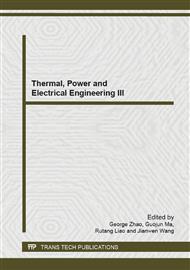p.308
p.316
p.322
p.327
p.332
p.337
p.341
p.349
p.353
Study of Hot Surface Aviation Fuel Thermal Ignition Pattern
Abstract:
Fuel evaporation and ignition process on the high-temperature hot surface are difficult to be predicted accurately. The rule of fuel evaporation and ignition delay that various with hot wall temperature have been obtained by utilizing the simulated experiment to study the evaporation and ignition process of aviation fuel on hot surface. This study complements the related content of the fuel ignition mechanism on hot wall,at the same, reference method for fuel fire engineering practice has been provided.
Info:
Periodical:
Pages:
332-336
Citation:
Online since:
June 2014
Authors:
Keywords:
Price:
Сopyright:
© 2014 Trans Tech Publications Ltd. All Rights Reserved
Share:
Citation:


